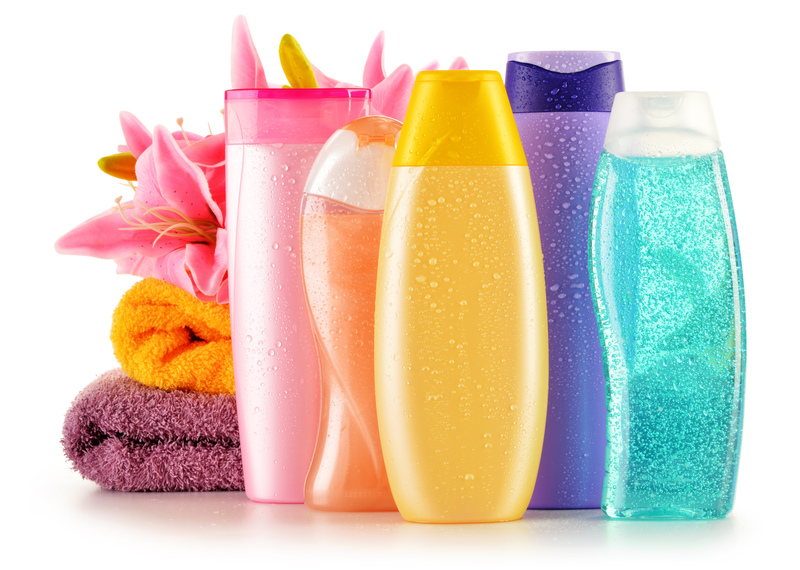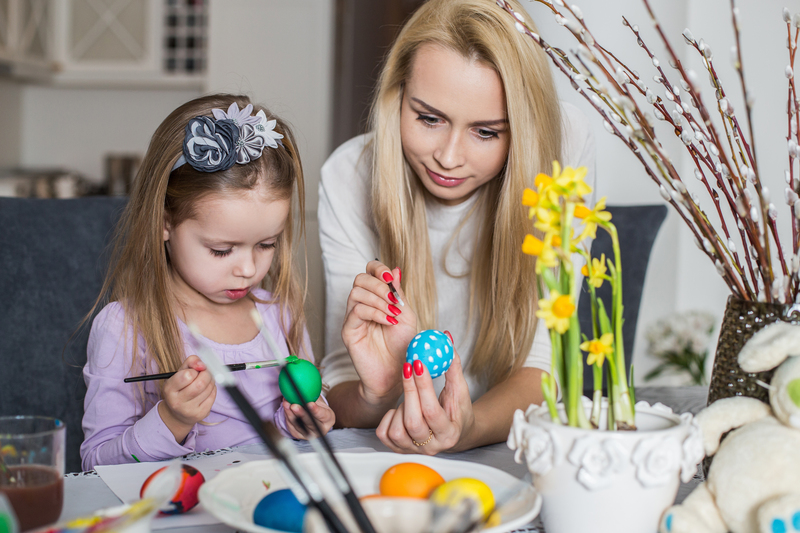Discover the Secret to a Pristine Stovetop: Vanishing Burnt-on Residue
Posted on 13/08/2025
Discover the Secret to a Pristine Stovetop: Vanishing Burnt-on Residue
Are you tired of stubborn, burnt-on residue ruining the look and efficiency of your once spotless stovetop? Let's uncover the best-kept secrets for banishing those unsightly marks and maintaining a gleaming, pristine cooking surface. Whether you have a glass, ceramic, or traditional metal stovetop, this comprehensive guide will walk you through every step to help you achieve stovetop perfection.

Why Burnt-on Residue Forms on Your Stovetop
No matter how careful we are, spills happen. Soups bubble over, sauces splatter, and before you know it, your stovetop has taken on an unsightly burnt-on layer that seems impossible to remove. But why does residue burn onto stovetops? Here are some common culprits:
- High Heat: Cooking on high temperatures can instantly char food spills.
- Neglecting Spills: Allowing spills to sit can make them bake on with repeated use.
- Improper Cleaning Tools: Using harsh or the wrong tools can spread and embed residue.
- Ineffective Cleaners: Some stovetops need special cleaners; using the wrong one can worsen the stains.
Understanding the cause is the first step in vanishing burnt-on residue and restoring your stovetop's luster.
Materials You'll Need for a Spotless Stovetop
- Baking soda
- Vinegar
- Dish soap
- Soft microfiber cloths
- Scraper or plastic razor blade (for glass or ceramic tops)
- Non-abrasive sponges
- Old toothbrush
- Lemon juice (optional)
- A bowl for mixing solutions
- Paper towels
Tip: Always refer to your stovetop's manufacturer guide for recommended cleaning products and tools to avoid accidental damage.
Step-by-Step Guide: Vanishing Burnt-on Residue from Your Stovetop
1. Preparation is Essential
- Ensure Safety: Always turn off burners and allow the stovetop to cool completely before cleaning.
- Remove Loose Debris: Wipe away any loose crumbs or debris using a damp cloth or paper towel.
2. Create a Targeted Cleaning Solution
- Classic Baking Soda Paste:
- Mix equal parts of baking soda and water in a bowl to create a thick paste.
- Add a few drops of dish soap for extra grease-fighting power.
- Vinegar Boost:
- Pour white vinegar into a spray bottle for easy application. Vinegar helps break down grease and burnt residue.
This combination reacts gently with burnt-on residue, making it easier to remove without scratching.
3. Applying the Secret Solution
- Spread the Paste: Using a soft cloth or your fingers, apply the baking soda paste generously to areas with burnt residue.
- Let it Sit: Allow the paste to sit on the stains for 15-30 minutes. This resting period helps the mixture break down tough, baked-on spots.
For extra stubborn residue, cover the area with a damp cloth after applying the paste to prevent it from drying out, ensuring deeper penetration.
4. The Gentle Scrape
- Use the Right Tool: For glass or ceramic stovetops, use a plastic scraper or razor blade at a low angle. For metal stovetops, use a non-abrasive pad.
- Scrape with Care: Gently scrape away softened residue. Never use steel wool or harsh scrubbers on sensitive surfaces, as they can scratch and permanently damage your stovetop.
5. Wiping Away the Remains
- Spritz with Vinegar: After scraping, spray the area with vinegar to lift and neutralize any remaining baking soda residue.
- Wipe Clean: Use a fresh, damp microfiber cloth to wipe down the stove. Repeat as needed until all grime is gone.
6. Finishing Touch for a Pristine Shine
- Buff Dry: Use a dry microfiber cloth to buff your stovetop to a mirror shine.
- Optional: Lemon Juice: For a natural polish and fresh scent, wipe the surface with a cloth lightly dampened in lemon juice.
Voila! The burnt-on residue has vanished, leaving you with a pristine stove that sparkles as if brand new.
How to Clean Different Types of Stovetops
Ceramic & Glass Stovetops
- Always use gentle, non-abrasive cleaners and tools.
- Plastic razor blades are your best friend for scraping stubborn residue.
- Baking soda and vinegar work wonders while protecting your glass finish.
Electric Coil Stovetops
- Remove coils and drip pans before cleaning.
- Most burnt-on residue can be removed with baking soda paste and scrubbing pads.
- For stubborn spots, soak drip pans in hot, soapy water for at least an hour, then scrub clean.
Gas Stovetops
- Remove burner grates and caps--clean separately with soaked baking soda paste if heavily soiled.
- Use a soft brush or toothbrush to reach around burners, knobs, and crevices.
- Soak removable parts in a mixture of hot water, dish soap, and a splash of vinegar.
Tip: Before reassembling, ensure all parts are dry to prevent rust and ensure proper ignition for gas stoves.
Common Mistakes to Avoid
- Skipping the Waiting Time: Allow solutions to sit and penetrate residue for easier cleaning.
- Using Abrasive Tools: Avoid using scouring pads and steel wool unless recommended by the manufacturer.
- Mixing Ammonia and Bleach: Never mix these chemicals, as it can create toxic fumes. Stick with natural cleaners for safety and convenience.
- Ignoring Care Instructions: Always check your stovetop manual for specific do's and don'ts.
Troubleshooting: Stubborn Burnt-on Stovetop Residue
If you face a burnt-on residue that simply refuses to budge after several attempts, try these advanced techniques:
- Overnight Soak: Apply baking soda paste, cover with plastic wrap, and let it sit overnight before scraping.
- Boiling Water: Carefully pour boiling water over metal (never glass) stovetops to help break up residue before scrubbing.
- Commercial Cleaners: If all else fails, use a manufacturer-approved stovetop cleaner designed for really tough spots. Always rinse thoroughly afterwards.
Maintaining a Spotless, Residue-Free Stovetop
Now that your stovetop is pristine, follow these simple habits to keep burnt-on residue from making a comeback:
- Wipe Up Spills Immediately: Address spills as soon as it's safe to do so.
- Perform Regular Cleanings: Deep clean your stovetop weekly to prevent buildup.
- Use Drip Trays: Liners under burners catch spills and make cleaning faster.
- Cook at Moderate Temperatures: Avoid cooking on unnecessarily high heat, which increases charring risk.
- Check Your Pans: Use flat-bottomed, well-fitting pots and pans to prevent spills.
Natural vs. Chemical Cleaners for Burnt-on Stovetop Residue
Natural Cleaners: Safe and Effective
- Baking Soda: Excellent at loosening burnt residue and odorless.
- White Vinegar: Cuts through grease and softens charred spots.
- Lemon Juice: Acts as a gentle, natural bleach and deodorizer.
Chemical Cleaners: Powerful, but Use with Care
- Commercial Degreasers: Designed for extreme messes but can be abrasive or leave harsh smells.
- Oven Cleaners: Used sparingly and with caution, only on certain stovetops as per manufacturers' instructions.
Remember: Always test any cleaner on a small, inconspicuous area first to ensure it won't damage your stovetop's finish.

Frequently Asked Questions about Vanishing Burnt-on Stovetop Residue
Can I use vinegar and baking soda on all stovetops?
Answer: Generally, yes! They are safe for most surfaces, but always check your manufacturer's manual or test a small area to confirm.
How often should I deep clean my stovetop?
Answer: We recommend a quick wipe after every use and a deeper clean once a week to prevent residue buildup and keep your stove looking pristine.
What should I avoid when cleaning stubborn burnt-on residue?
Answer: Never use steel wool or coarse scrubbing pads on glass, ceramic, or enamel, as they can cause permanent scratches. Always stick with recommended tools and cleaners for your stove type.
Conclusion: Your Pathway to a Pristine, Sparkling Stovetop
Burnt-on residue doesn't have to be a permanent fixture on your stovetop. With the right techniques, a touch of patience, and a commitment to regular maintenance, you can vanish even the toughest burnt-on stains and restore your stove's original shine. By understanding the secrets to effective cleaning and leveraging natural solutions like baking soda and vinegar, you'll not only keep your kitchen inviting and hygienic but also extend the life of your stovetop appliance.
Start using these expert tips today, and witness the transformation--a truly pristine stovetop free from burnt-on residue every time you cook!
Discover more kitchen secrets and cleaning hacks by exploring our other expert guides. Happy cleaning!




